A riot of color on the windowsill, or how to grow cinnabar clivia
Fascinating beauty and simple agricultural technology have turned plants from the amaryllis family into favorites of flower growers. Clivia cinnabar only confirms the validity of this characterization. Indoor plants with exotic origins have always been popular, but this evergreen culture among them is a real long-liver. With proper care, it is able to delight the owners with annual flowering for 15 long years.
Lighting and temperature
Clivia cinnabar belongs to light-loving cultures. Lack of sunlight slows down its growth and may result in the fact that the buds on the flower never appear. Therefore, it is not recommended to put a pot with it on the north side. The most comfortable clivia will be on windowsills facing west or east.
In direct sunlight, the delicate leaves of the flower burn, so growing it on the south side will require a special approach. In the sultry midday hours, the clivia will need to be shaded. At home, this task will be handled by:
- tulle;
- gauze;
- tracing paper;
- jalousie;
- roller blinds.
In warm weather, the flower feels good in the fresh air. It can be taken out to the balcony, veranda, terrace, gazebo or garden. A pot with cinnabar clivia is placed in a place protected from rain, drafts and bright sun.
The plant does not like intense heat. The optimal temperature range for it is 20-26˚C in the spring-summer period and 13-15˚C in the resting phase (October-November). Clivia needs less light in autumn. She will need heat again when she releases the flower-bearing stem. Failure to comply with the temperature regime in the dormant stage cannot destroy the plant. But it is fraught with a slowdown in its development and a lack of flowering. Clivia buds may appear in this case, but they will be small and wither quickly.
Advice
The older and more luxuriant the plant, the more time it needs to rest. In young flowers, the dormant period lasts 1.5-2 months.
Watering
Watering the clivia properly requires moderation. For it, use settled water at room temperature. It is better if it is soft. The signal for more frequent watering is the appearance of the first buds on the plant. At this point, the height of the flowering stem is usually 10-15 cm.
Overdoing it with hydration is risky. In moist soil, the roots of clivia are easily attacked by fungal diseases. If this happens, it will be difficult to save the plant. For the same reason, they try to protect it in every possible way from excess moisture.
- For a flower, choose a pot with holes in the bottom.
- When planting and transplanting, drainage is used.
- The pallet is immediately freed from the liquid drained into it.
Waterlogged clivia is easy to recognize. The tips of its leaves begin to turn brown, and the base of the stem begins to rot.
The next watering in spring and summer is carried out when the top layer of soil in the pot dries up. With the onset of a dormant period (late autumn-winter) and provided it is kept cool, cinnabar clivia ceases to need frequent moisture. At this time, it is advisable to use a spray for watering. A kind of shower will solve 2 problems at once: it will saturate the soil with moisture and refresh and cleanse the leaves of the flower. If the air in the room is warmed up to 20˚C, you cannot do without a watering can, since watering the clivia is needed more abundant.
Spraying and feeding
Cinnabar clivia comes from Africa, so dry indoor air will not interfere with its cultivation. Its leaves do not need frequent spraying.But occasionally you will have to devote time to cleaning them from dust and other contaminants. This is done with a damp sponge, cotton swab, or soft cloth.
Clivia is fed at home with mineral and organic compounds, adding them alternately. They begin to feed the flower when it wakes up from hibernation, and the buds bloom on it. Nutrient mixtures are introduced every 2-3 weeks. Clivia cinnabar needs root feeding. When growing a flower from seeds, the start time of the procedures is determined by the first pick. If the seedlings have taken root, it has come.
As a fertilizer, any drug that the manufacturer recommends to feed flowering indoor plants is suitable. But you need to be careful with the introduction of nitrogen-containing compounds. An excess of this element will lead to the fact that instead of laying the buds for the second flowering, the cinnabar clivia will direct all its forces to the formation of new leaves. In the dormant stage, the plant does not need nutrients.
Transfer
The roots of the flower are powerful and fleshy, but very fragile. They are easy to injure, and damaged areas quickly rot without treatment. For this reason, plant transplanting requires extreme caution. The tight pot does not interfere with the development of the cinnabar clivia, but if its roots appear from the drainage holes, it is time to replace the container with a more spacious one. Experienced growers advise transferring the plant from one container to another - this is the safest way to transplant it.
The procedure is carried out when the last buds on the clivia fade. The new pot should not differ much in diameter from the old one - a maximum of 2-4 cm. If the container is too large, you can not wait for flowering. The plant prefers loose heavy soil with a slightly acidic reaction.
The soil for cinnabar clivia at home is prepared by mixing 4 components in equal amounts:
- leafy ground;
- sod land;
- humus;
- sand.
A composition of turf, peat and compost is also suitable for her. Its components are taken in a 2: 1: 1 ratio. The addition of any baking powder (coarse sand, perlite, vermiculite) will help to facilitate such a soil mixture. This is especially important for young plants.
It is advisable to transplant the flower into a substrate rich in nutrients. To do this, add to it:
- bone meal;
- complete mineral fertilizer.
For 1 liter of soil mixture add 2 g of each substance.
The regularity of the procedures depends on the age of the clivia. For adult flowers, a transplant is required every 2-3 years, but subject to the annual replacement of the top layer (up to 5 cm deep) of the substrate in the pot. Plants younger than 3 years old are transferred to new pots every spring. When transplanting, it is important not to deepen the root collar of the flower. It must remain level with the soil surface. This will prevent the lower leaves of the clivia from rotting.
Advice
If it was not possible to avoid breaking off the plant roots during transplanting, the injured areas are sprinkled with activated carbon powder.
Generative reproduction
At home, cinnabar clivia is grown in three ways:
- from seeds;
- from a daughter shoot;
- from part of the rhizome.
It is easy to achieve the appearance on the plant of large red fruits, inside which the seeds are contained. For this, it is enough to artificially pollinate the clivia flowers. But here you have to be patient: the fruits ripen for a long time - for 9-10 months. This process takes a lot of energy from the flower.
In wild clivia, root rudiments of seeds appear already inside the berry. Therefore, when the ripe fruit opens to the ground, they fall already germinated, easily taking root. At home, it is better to stick to the same scheme. The fruit is not touched, giving the seeds the opportunity to reach full maturity, and when they crumble, they immediately plant. If your own clivia is not in the house, you can purchase seed from flower growers. But there is no guarantee that it will successfully germinate. Fresh seeds have the best germination.The correctness of their packaging is also important.
Seeds are sown in a moist substrate consisting of components mixed in a 2: 2: 1 ratio:
- turf;
- river sand;
- peat.
They are sealed to a depth of 1 cm. Clivia seeds are laid out at intervals of 2 cm. For germination, they need heat and humidity, so the container is placed under a film or glass. Keep it in a room with the highest temperature. Before sprouts appear (on average, it takes about a month), caring for clivia crops consists of regular airing and moderate watering. In the future, they need to pick into separate containers. It is carried out when the seedlings release the first true leaves. As the plants develop, several more transplants are performed.
When the seedlings are 4 years old, in September they are sent to the first dormant period, stopping watering and lowering the temperature of the content. They are taken out of hibernation in November. The seed-sown cinnabar clivia will bloom only at the age of 5-6 years. Not all connoisseurs of indoor plants agree to wait that long. In addition, caring for seedlings is a rather laborious task. But generative reproduction may be the only option if a crop like Clivia miniata is not available in specialty stores or if the price is too high.
Alternative ways
It is convenient to separate daughter shoots from an adult plant when transplanting it. Wet sand in its pure form or mixed with peat is suitable for their rooting. You can replace it with perlite. It is undesirable to use another substrate, since it will be difficult to monitor the degree of its moisture content, and rot may develop on the roots of clivia in moist soil.
Young children with at least 4 leaves take root well. They need watering, but very moderate. Transplantation of daughter shoots to a permanent place is carried out when new, already own leaves appear on them.
The easiest way to propagate the cinnabar clivia is by dividing the rhizome. A flower grown in this way will release its first buds already at 2-3 years of age. But, until it takes root, you will have to take care of its protection from decay. Having cut the rhizome, the wounds are immediately treated with charcoal. In the first few days, watering the delenki planted in separate pots is contraindicated. In the future, moisturize them with care.
Leaf color change
There are drawbacks to the simplicity of clivia farming techniques. Counting on the unpretentiousness of the plant, inexperienced growers begin to experiment with caring for it, which leads to unpleasant consequences. The most common problem when breeding cinnabar clivia is yellowing of its leaves. Various reasons can lead to it:
- natural aging of the flower;
- improper watering;
- lack of nutrients;
- depletion of the plant;
- the impact of external adverse factors.
If the lower leaves have changed color, do not be afraid. This is a normal process in the life of a plant: over time, they die off, and the flower releases young ones. Clivia cinnabar is a slow-growing culture. It renews the leaves gradually, with the same speed and their dying off. The spread of the problem to the entire flower indicates the need to revise the watering regime. In case of obvious waterlogging, the plant must be removed from the pot and transplanted into a fresh substrate. But before that, its roots are carefully examined, removing rotten areas and treating the wounds with charcoal or activated carbon.
Due to the lack of nutrients, flower leaves can turn yellow only at the stage of active growth. It is easy to deal with this, it is enough to provide the clivia with regular care in the form of dressings. If ovaries have appeared on the plant at home, but it is not planned to collect seeds from it, it is better to get rid of them. Otherwise, it will weaken, directing all energy to ripening the fruit, and its leaves will change color. The ovaries are cut off immediately, and the peduncle is cut off when it begins to dry out.
It is not easy for Clivia to adapt to the new conditions of detention. It is not recommended to rearrange or turn the pot with it. Otherwise, don't be surprised why the leaves turned yellow. The same reaction in a plant is caused by transplantation and drafts.
Advice
If the leaves of the clivia are covered with brown spots, it means that they are burning in the bright sun. The solution here is one - to remove the flower in a place with diffused lighting.
Flowering problems
The natural rhythms of the plant make it bloom every year. The absence of buds or their low location (in the middle of the leaves) is a reason to think about whether the clivia is being cared for correctly. The first thing to do is estimate the size of the pot. The connection between them and flowering is direct: in clivia it occurs when its roots grow well, completely encircling an earthen lump. If you plant it in too large a container, it will throw all its strength into the formation of a powerful root system and release many large leaves, but it will not please you with buds.
Autumn rest is also important for plants. When low peduncles appear, the root of the problem should be sought in non-observance of the dormant period. Lack of lighting and low or too high temperatures may also be the reasons why the plant does not bloom.
Clivia cinnabar begins to bloom in February. She has a long flowering at home - the plant delights the owners with rich colors on the windowsill for up to 3 months. The stems are literally covered with orange-red buds: there can be 10-20 of them. They open wide, resembling a funnel in appearance. This happens gradually: every day the plant will only become more beautiful. Adult clivia can bloom 2 times a year. Proper care and providing the plant with the necessary conditions during the dormant period will help to achieve this.
The beginning of flowering imposes a strict ban on the rearrangement of the clivia. If you cannot do without it, the orientation of the pot is not changed. The direction of growth of the flower when moving should remain the same. When this rule is violated, clivia can react painfully by dropping leaves. Tall flower stalks of the plant stretch up towards the light, so it is better to tie them up to a support.
Pest control
Clivia cinnabar can suffer at home from insect infestations:
- scale insects;
- aphids;
- mealybug.
The scale insects form entire colonies on the plant, feeding on cell sap. As a result of their invasion, its leaves turn yellow, wither, dry up and fly around. They fight them mechanically and with the help of insecticides. Adult insects are removed from the flower with a sponge or cotton swab dipped in soapy water. The next step is to sprinkle the clivia leaves with a special preparation.
They do the same with mealybugs. After wiping the plant with a soapy sponge, it is given a warm shower. If there are many insects, clivia is treated with systemic insecticides. Repeat this care weekly. Mealybugs live on leaves, stems, flowers. If you do not start to fight them in time, the plant may die. These pests are clearly visible with the naked eye. Curvature, yellowing and drying of the leaves also indicate their appearance.
With the numerous advantages of cinnabar clivia, it has only one minus - poisonousness. Its roots and leaves contain a dangerous toxic substance. Once in the body, it causes vomiting and even paralysis. Therefore, it is better for pet owners and parents of small children to choose other indoor plants for breeding. If you still can not resist the beauty of clivia, the flower pot should be placed in a place inaccessible to curious experimenters. When caring for a plant, it is important to be careful: make sure that the poisonous juice does not get on the mucous membranes, wash your hands thoroughly after trimming its roots.
The absence of flowers resembling bells of an unusual shade does not deprive the clivia of its cinnabar decorative effect.Thanks to its dense and fleshy leaves, the length of which can be up to 70 cm, and the shape is close to a samurai sword, this African beauty is spectacular all year round. They are collected in a kind of fan, creating a false impression that the flower has a stem. With age, the long-liver-clivia only prettier, becoming thicker and more magnificent, and attracting admiring glances.
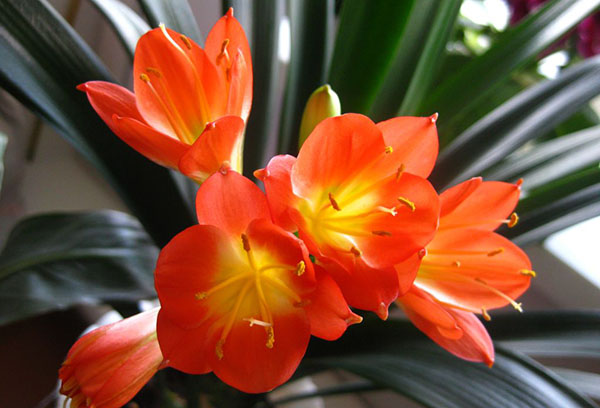
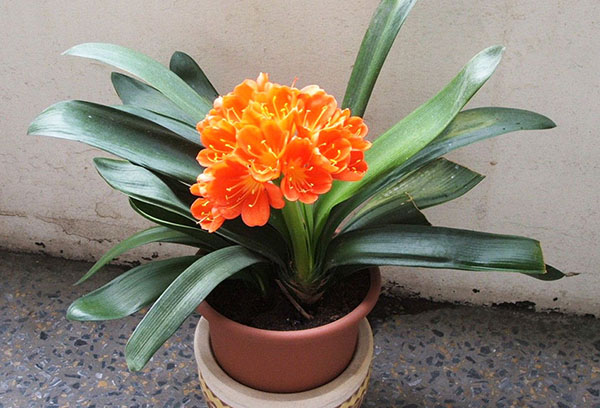
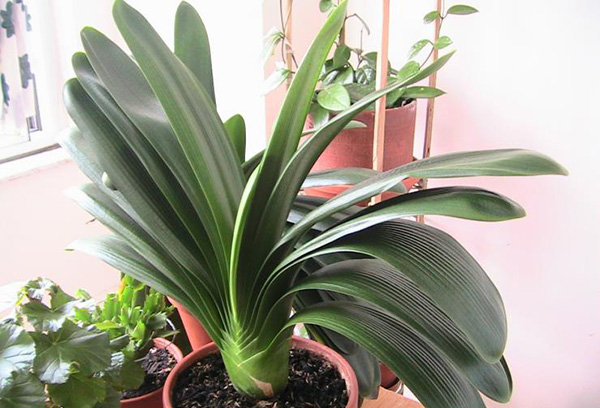
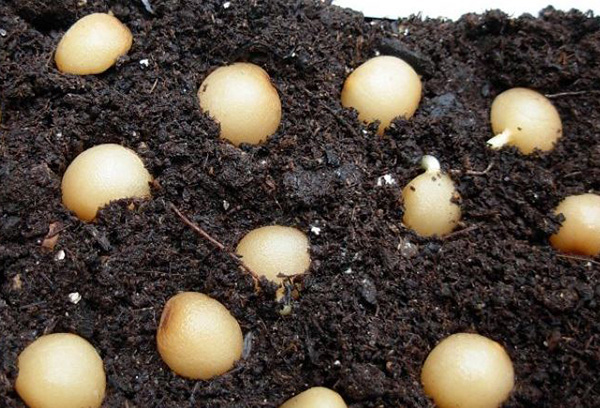

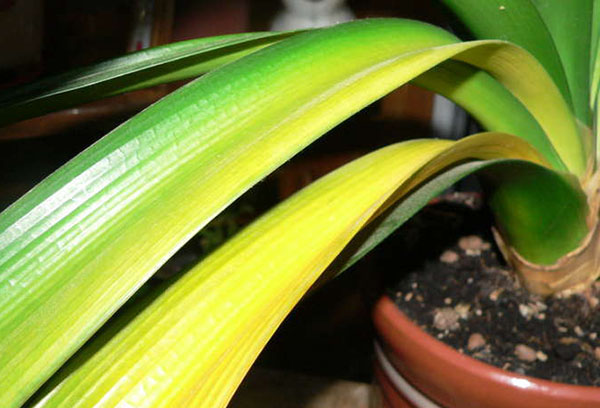
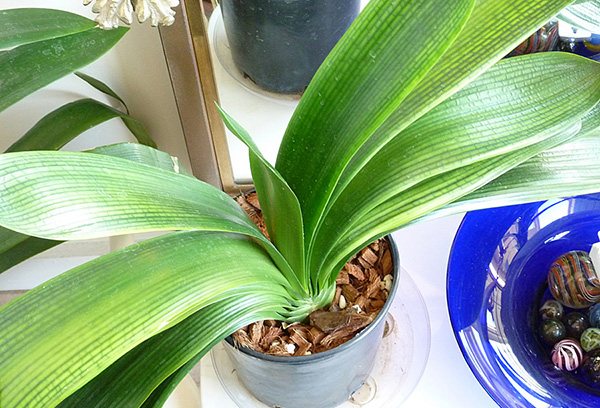
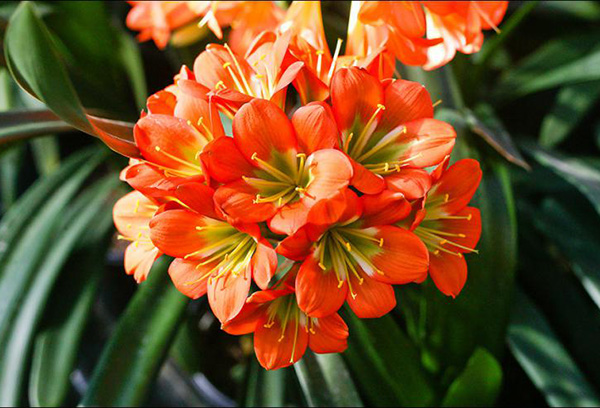
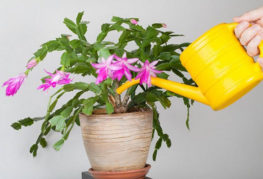
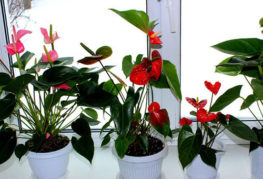
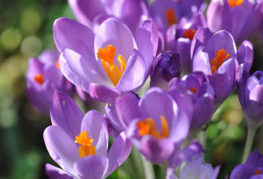
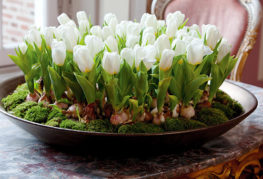
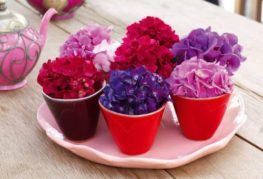
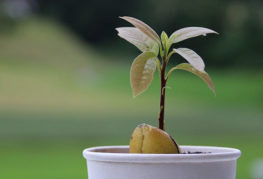
and will be published shortly.